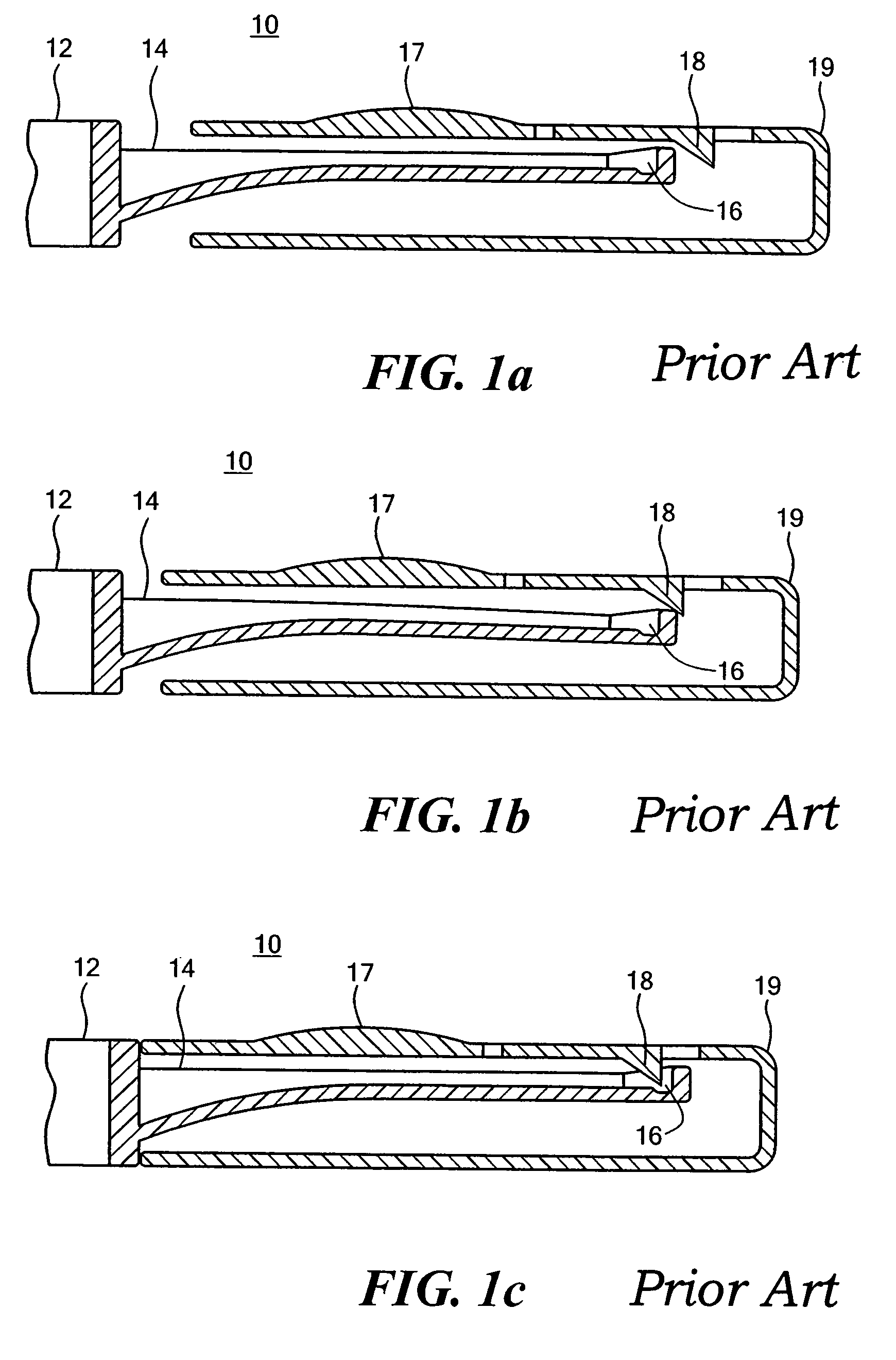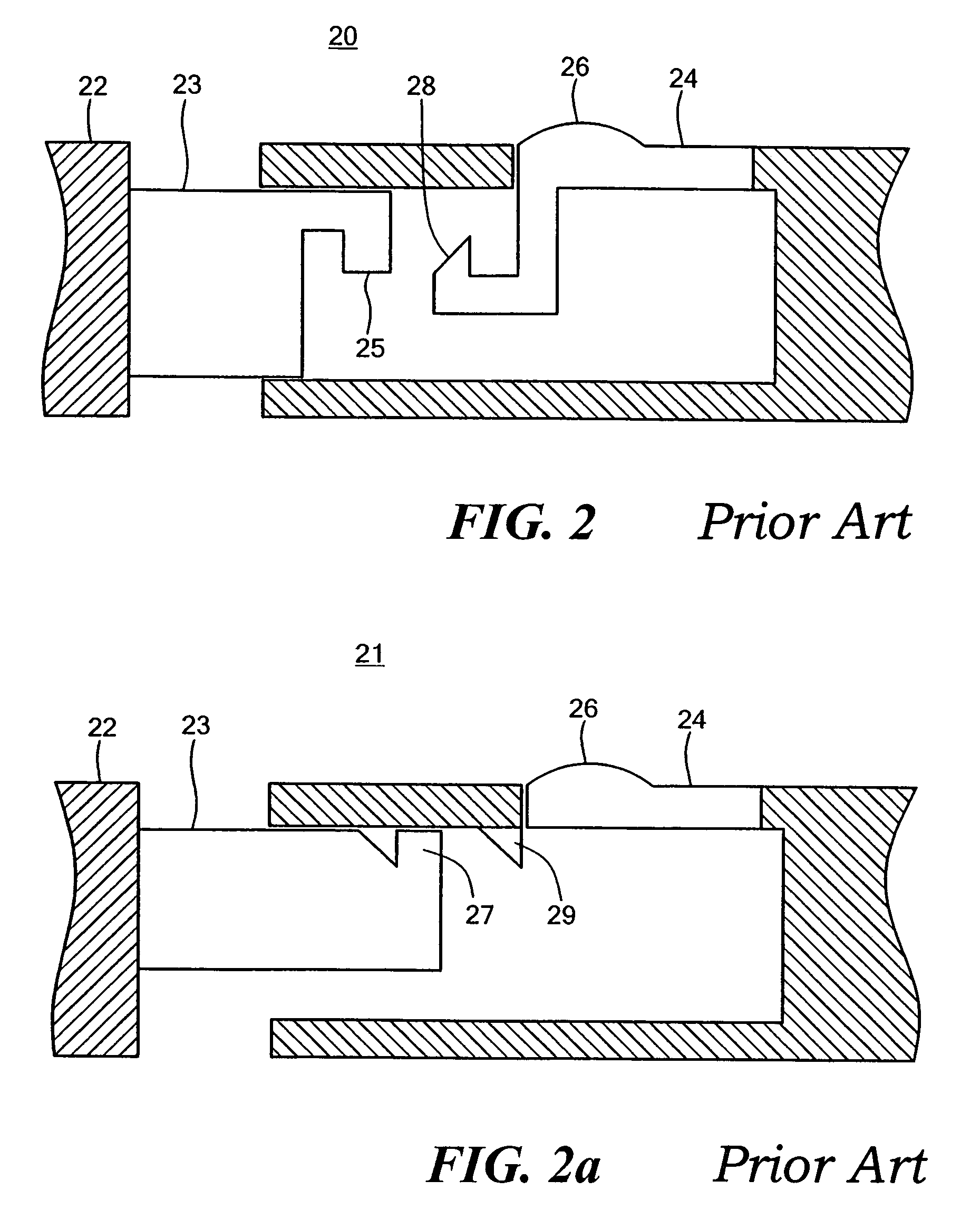Safety buckle with multiple orientation clasp
a safety buckle and multiple orientation technology, applied in the field of safety buckles, can solve the problems of buckles being prone to jamming, potentially dangerous or injurious situations, and further adverse effects on buckles
- Summary
- Abstract
- Description
- Claims
- Application Information
AI Technical Summary
Benefits of technology
Problems solved by technology
Method used
Image
Examples
Embodiment Construction
[0052]FIGS. 1a through 1c illustrate a central cross-sectional side view of a conventional two-operation safety buckle 10. Buckle 10 comprises a male member 12 having a center arm 14 with a catch recess 16 that engages a catch 18 on the female member 19. As illustrated in FIG. 1b, the center arm 14 of the male member 12 is displaced downwardly during insertion to permit the latch 18 to protrude into the latch recess 16 when the male member 12 is fully inserted and the center arm 14 returns to its undisplaced position, as seen in FIG. 1c. A button 17 is located on female member 19 for disengaging central arm 14 from the catch 18. Processing button 17 displaces center arm 14 away from catch 18 of the female member 19, so that male member 12 can be withdrawn from female member 19. Buckle 10 is not configured to be reversible, meaning that if male member 12 is inserted in an opposite orientation, with center arm 14 facing a bottom of female member 19, center arm 14 does not engage latch...
PUM
 Login to View More
Login to View More Abstract
Description
Claims
Application Information
 Login to View More
Login to View More - R&D
- Intellectual Property
- Life Sciences
- Materials
- Tech Scout
- Unparalleled Data Quality
- Higher Quality Content
- 60% Fewer Hallucinations
Browse by: Latest US Patents, China's latest patents, Technical Efficacy Thesaurus, Application Domain, Technology Topic, Popular Technical Reports.
© 2025 PatSnap. All rights reserved.Legal|Privacy policy|Modern Slavery Act Transparency Statement|Sitemap|About US| Contact US: help@patsnap.com



